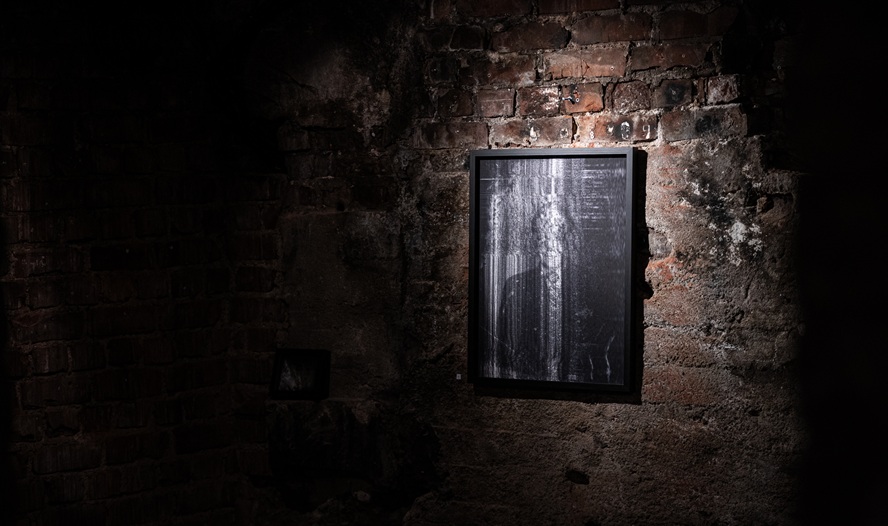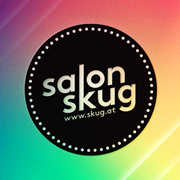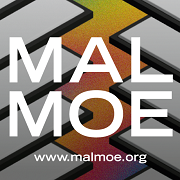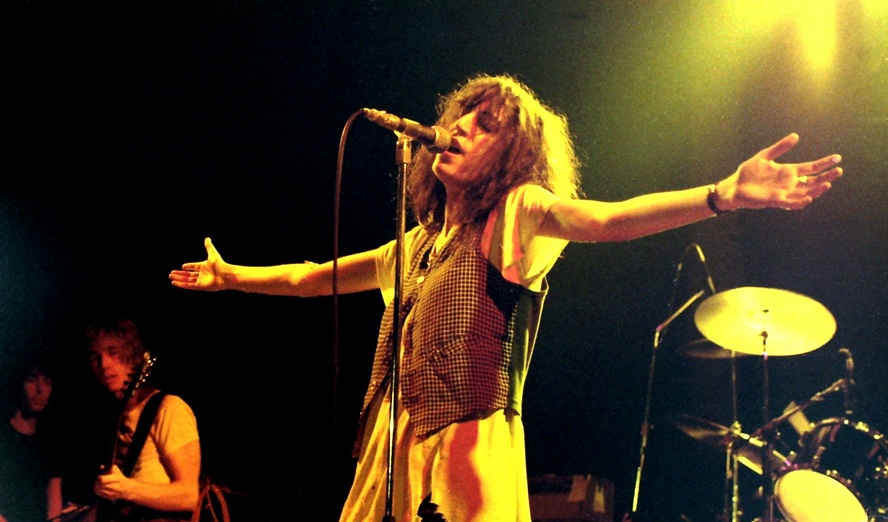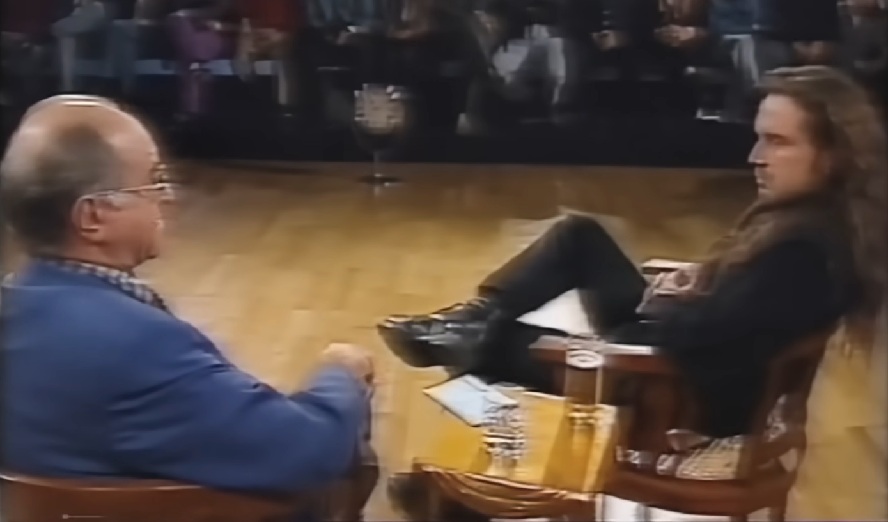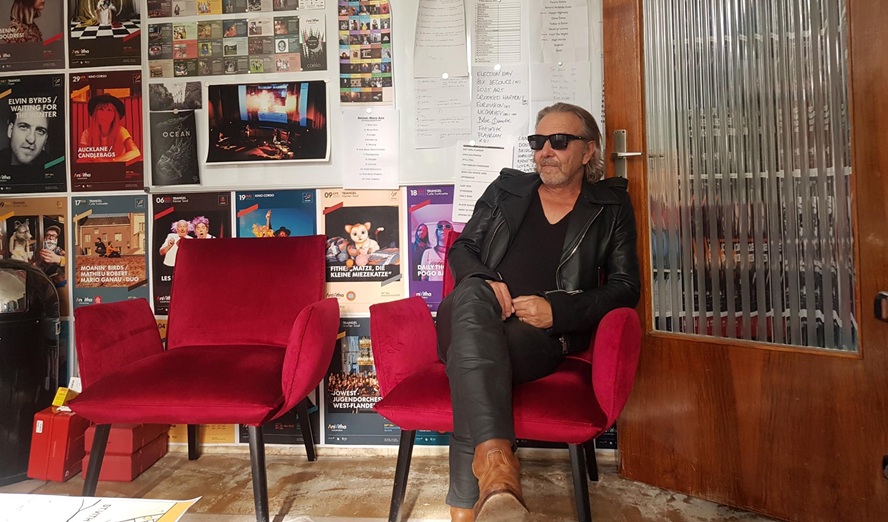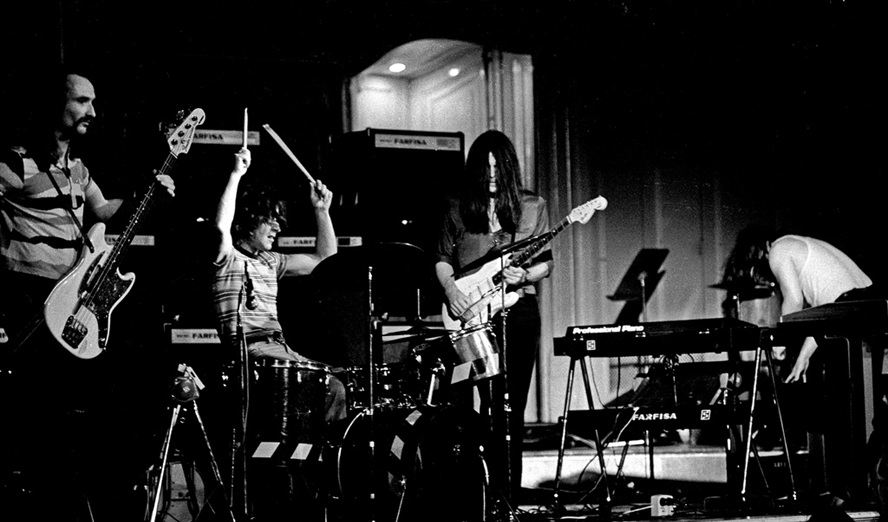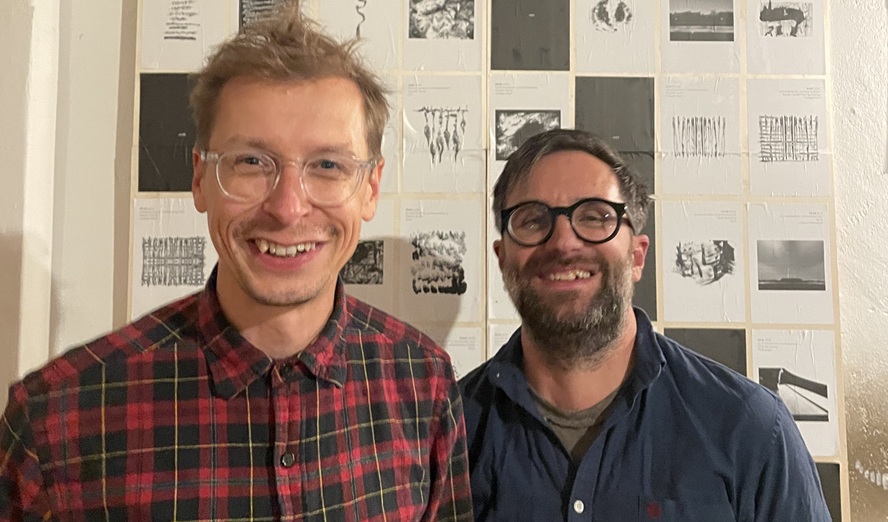In Finland, houses traditionally have names, and in this case, the house being discussed is called Solmun talo, Solmu House. »Solmu« means »knot«, and the project associated with it is titled »The Knot in Time«. This project explores various themes that converge and intertwine at a central point, creating a space where everything happens and connects.
The starting point for the entire endeavor was the discovery of many glass negatives, found while sifting through a ruin-like building – the aforementioned Solmu House which was home for the photography studio Olavi many years ago. Some of them were already destroyed, forgotten, so to speak, some of them in the process of disintegration immediately after they had been taken out of the house, and a few still totally intact. The outcome is a multifaceted work, including an exhibition, a book, and the final album by Paavoharju. The house, which was abruptly abandoned, seems in retrospect like a corpse that never got a proper funeral. The exhibition can be seen as a kind of a conclusion, if you wish, for both Paavoharju and the house, which can now peacefully decay. But the funeral also brings back memories, refreshes them and builds bridges over the long-gone decades.
However, this is by no means a sad project. The members of the Savonlinnan based artist collective consisting of Lauri Ainala, Sini Kosonen, Juho Liukkonen and Ville Erkki Tarke have a remarkable ability to draw the last remnants of life from forgotten objects, to briefly halt time, and to create a portal to another realm. This is not as melancholic as, for example, simply watching the disintegration of a recording in Basinski’s »Disintegration Loops«. Instead, it feels more like an expansion of time: the world is not merely a fleeting moment that becomes irrelevant and disposable in the next instant, subject to capitalist exploitation strategies. Rather, history – if not circular or repetitive – should be thought of in much longer intervals. Everything happens more slowly, and one becomes more attentive; the present stretches far back into the past, and the voices of the dead and the distant echo clearly, haunting the here and now.
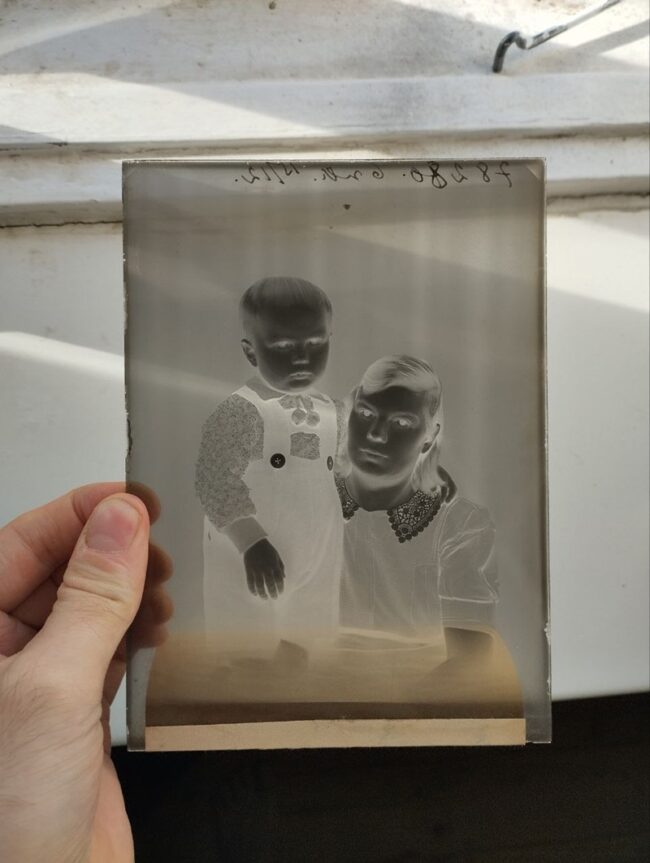
Allowing the house to speak
After the photos were unearthed from their dark grave and exposed to warmth and humidity, their disintegration could be witnessed almost in time-lapse. They had to be meticulously restored by hand before they could be used further in the project. The exhibition that was shown in Savonlinna and Helsinki focuses on making the images visible in different ways, alone and in collaboration. The approach of Ainala is to make them audible through spectral processing, allowing the unconscious of the house to speak. Kosonen shows photo prints, installations and video works she made together with Ainala. Another approach by Tarke presents the ruin as a digital 3D-model, while Liukkonenas makes beautiful pictures that preserve the process of preserving itself – which is a creative process by itself as well.
The vernissage was followed by a gig on Saturday, during a Savonlinna super weekend, with Paavoharju playing their last show, drawing crowds from the UK and Estonia. While the media was largely silent on the band project, this finally seems like a proper and honorable celebration of a decades-long journey. Surprisingly, one member of the house’s family, who attended a Paavoharju concert 20 years ago, was at the exhibition. Some older people saw their childhood pictures for the first time ever in the exhibition.
A lot of this is documented in the accompanying book with a DVD. Alongside the story of the exhibition and the techniques used by the artists, the book also dives into the history of the house, its owners, and the people who inhabited and built it, including contributions from their descendants. The DVD has an advantage over the book: you can also hear live songs from Paavoharju and the wonderful soundscapes by Juho Liukkonen, which accompany and enrich the exhibition. Some of these soundscapes were composed in collaboration with Ainala. The project can be seen as a playful exploration of found footage, but also as an engagement with the place where you live and the people who once inhabited it. It is, in any case, a very sensitive, respectful, and aesthetic confrontation with what we mindlessly call the past. We talked to Ainala about the project.
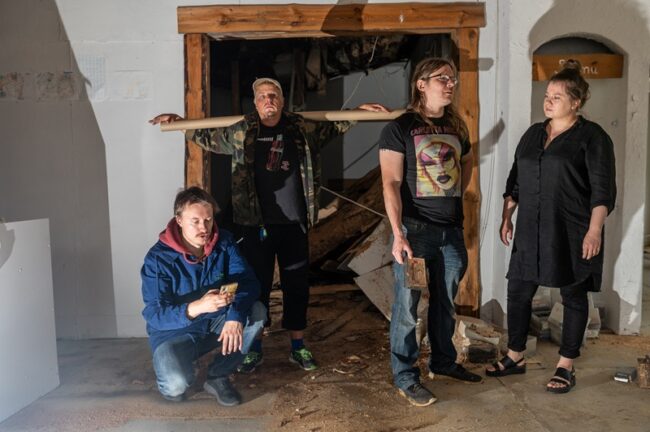
skug: When did you stumble upon the glass treasure?
Lauri Ainala: In early spring 2021. I believe it was in March.
Did you realize quickly what kind of treasure you found?
Yes, immediately.
What was your first impression?
I thought it was an absolutely incredible find, and it immediately felt like something great would come out of the glass negatives.
When did you choose to make a book project out of it?
We had some preliminary talks about creating a book around the time we arranged to hold an exhibition at the Riihisaari – Savonlinna Museum in the spring of 2022, scheduled for autumn 2023. However, the book project really took off only after the exhibition was set up and opened at the museum. Boris Brander, the head of Abraxas Publishing, was so impressed with what he saw that he wanted to publish a book. The exhibition itself ran from September 15, 2023, to April 14, 2024.
Do you plan to show the exhibition somewhere else, again? Do you think it works in another context? How is it connected to the Finnish way of living?
We created a lot of works specifically for the exhibition, and some of them haven’t been displayed anywhere yet. From these pieces and other materials, we can create various types of exhibitions, so we can definitely make the whole thing work in different cities and very different spaces. The works in the exhibition are somewhat detached from a historical context, so they function on a more universal level and aren’t particularly strongly tied to Finnish culture or lifestyle. The works reflect a certain era more than any specific Finnishness.
What does it mean to you personally?
It’s about exploring places where people usually don’t go, about discovery, alchemy – transforming trash into gold, opening new perspectives, seeing new worlds, and challenging the dull, banal, and results-driven worldview of our time.
That’s already all there in your documentary film »Unien Savonlinna«. Time seems to go sideways in your world, past and present are intertwined. It is a very spiritual thing, isn’t it?
Maybe it is spiritual in some way, but I hope to be able to inspire people to do interesting things that actively challenge dull everyday life in a very concrete way.
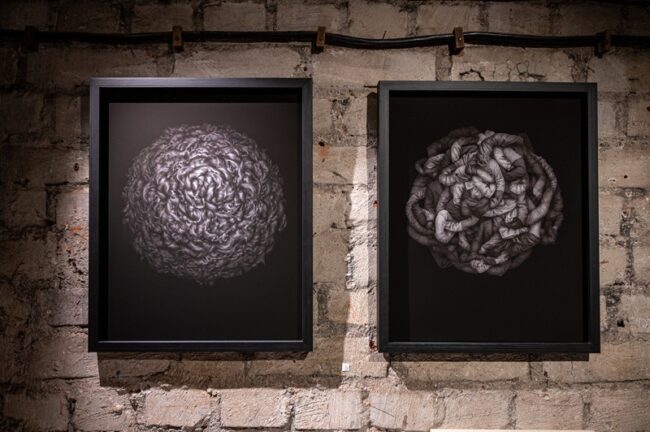
How would you describe the transformation from youngsters to »serious artists«? Is there even such a change at all? Or do you do the same thing you always did?
Of course, with age and experience our creations and productions become more nuanced, at least in some projects. On the other hand, I’m still making music and videos with Säästöpojat, and they remain as silly as ever. I think that art (or music, or books, or movies) doesn’t necessarily need to be good or high quality, as long as it’s interesting! All kinds of senseless and foolish activities are often much more refreshing than making serious art.
The idea of clearly distinguishing between serious and unserious is dreadful. Humor or fun are simply also just ways of engaging with reality. The exhibition is serious in the sense that it engages – playfully – with the history of the place you’re living in. Why is that important to you?
It’s important to me because the history of a place isn’t just about the past; it lives in us and around us, shaping how we understand our identity and surroundings. A playful approach makes history more accessible and opens up new perspectives that can be surprising and inspiring. It’s essential that the past doesn’t remain too distant or overly serious but comes alive in ways that resonate in the present moment. The history of Savonlinna is important to me because my own memories are inextricably linked to it.
How does the project relate to you, Paavoharju, and your artist collective?
The book and Solmu ajassa project are inseparably connected to Paavoharju’s final album, »Yön mustia kukkia«. The entire album originated from the sound art pieces I created for the exhibition, which began to resemble Paavoharju’s music almost by accident. After rediscovering lost vocal and spoken-word recordings from 20 years ago, it became clear that Paavoharju had to step onto the stage one last time. Anniina Saksa wrote lyrics inspired by the glass negatives for the new songs, and we embedded the glass negative images, converted into sound, within the tracks. The album also served as the exhibition’s soundtrack when it was held at Laterna Magica Gallery in Helsinki during the summer of 2024.
How do you feel about the end of Paavoharju?
I don’t feel so strongly that anything has ended because Paavoharju’s albums exist, and you can always listen to them whenever you want!
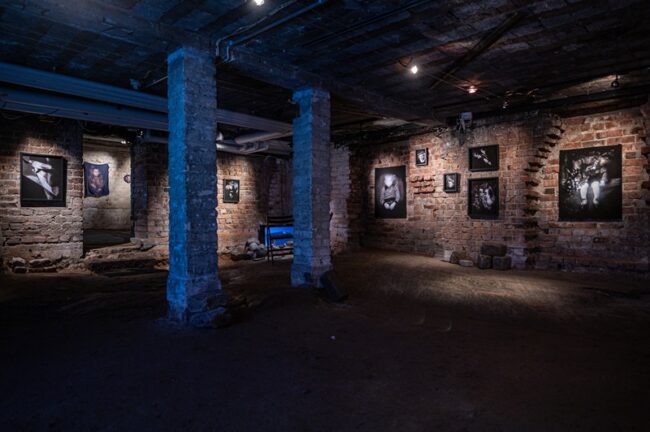
Did you contact the people who initially produced the pictures?
The photographer who presumably took these images, Paavo Sihvonen, passed away in the 1970s, but we’ve been in touch with his descendants. The images on the glass negatives are mostly typical Finnish portraits from the 1930s to 1940s, so in that sense, they’re not particularly artistic. However, we do respect the photographer’s craftsmanship.
How did his descendants react? Did they like the fact you were scavenging their ancestors’ property?
The Solmu House is, after all, a commercial building, and it has never been anyone’s home, so it wasn’t such a personal matter for the family members either. In fact, a younger family member even contributed a small part to our exhibition by reading a text about photo development that was also quoted in the book. You could then listen to her voice through an old landline phone receiver. Family members were also present at the exhibition’s opening, and they all had a very positive reaction.
The exhibition is finished for now and Paavoharju is perfect. Are there any projects we can look forward to?
The new Orpokotijuhlat Saarella album is almost ready and Säästöpojat are making new stuff as well! My solo exhibition is likely coming to Helsinki in 2025 and to Riihisaari – Savonlinna Museum in 2026. The new, expanded, and largely rewritten version of the Tuote-book, will be published once a publisher is secured and things start moving forward. Savonlinna’s new art museum is thriving, planning new exhibition collections, and possibly even surprising twists and events.
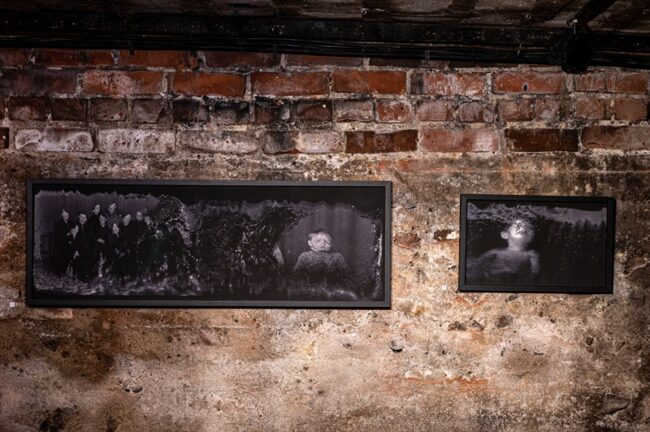
Links: https://www.laterna.net/exhibitions/solmu-ajassa—the-knot-in-time; https://www.facebook.com/paavoharju.savonlinna
